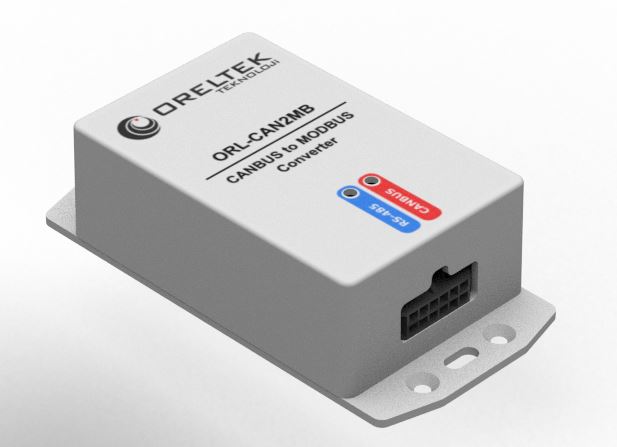
Note: Please contact for more detailed information, support and user guide.
CAN2MB – CANBUS MODBUS Converter
( Optional SAE – J1939 Support)
The CAN (Control Area Network) bus, widely used for data communication in automotive electronics, enables the use of Modbus RTU over RS-485 to communicate data between industrial products.
Possible Areas of Use:
- It is suitable for automotive use.
- It can be used to obtain engine and indicator data in construction machinery such as excavators, backhoes, loaders, and drills.
- It can be used for truck fleet management systems.
- It can be used for forklift tracking and monitoring systems.
- It can be used to obtain engine information in new generation motorized generators with electronic control systems (ECUs).
- It can be used as an industrial CANBUS solution.
- * It can be customized according to customer demand.
Product Features:
- It can operate in the voltage range of 9-32VDC.
- There is 1 CAN-BUS connection. (CAN 2.0 A and B compatible.)
- It can work with Standard CAN ID or Extended CAN ID up to 1Mbit/s.
- There is 1 RS-485 connection.
- Data traffic LED indicators are available.
- It is used over Modbus RTU.
- It can extract J1939 messages up to 20 messages. (optional)
- Raw data capture of up to 150 messages
- Permanent configuration can be made with Modbus RTU.
Persistent configuration:
– Modbus connection address change
– RS-485 connection speed selection
– CAN-BUS ID type selection
– CAN-BUS connection speed selection
Temporary Configuration: (When the power is cut off, the settings return to the factory settings.)
– Raw CAN ID adjustments (filtering by CAN ID) - With the first energy, reception and registered address information are given over RS-485.
Parsed SAE – J1939 vehicle datas:
The following data is parsed when the vehicle data line supports it.
- Engine Malfunction Lamp Status
- Engine Speed (RPM)
- Vehicle Speed (km/h)
- Fuel Tank Level ( % )
- Vehicle Total Odometer ( km )
- Vehicle Temporary Odometer ( km )
- Engine Working Hours ( h )
- Engine Fuel Ratio ( L/h )
- Engine Average Fuel Consumption ( km/L )
- Engine Total Fuel Consumption ( L )
- Engine Coolant Temperature ( °C )
- Engine Oil Temperature ( °C )
- Gas Pedal Position Status ( % )
- Parking Brake Status
- Brake Pedal Status
- Gas Pedal Kickdown Status
- Engine Load at Current Speed ( % )
- Realized Engine Torque Ratio ( % )
- Realized Maximum Usable Torque Ratio ( % )
- Engine Torque Demand Ratio ( % )